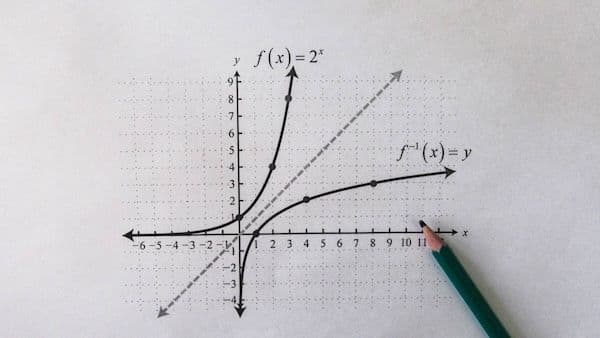
SAT Superscore Explained
Discover the ins and outs of SAT super scoring. Learn how it works, which colleges accept it, and how it can impact your college admissions journey.

This blog was originally published in December 2022 and has been updated with the most recent and relevant information.
The SAT has changed a lot in the last few years. We’ve taken the opportunity to update this blog from 2022 with the most up-to-date information on SAT Superscores now that the SAT is fully digital and an adaptive exam. Learn how the SAT Superscore works, how it differs from other score options, and how you can use it to optimize your college application package.
What is the SAT Superscore?
The SAT Superscore is the highest possible score that a student can achieve by combining the best scores from multiple SAT test dates. This means that if a student takes the SAT multiple times and gets a higher score on one section of the test on one date and a higher score on another section on a different date, their superscore would be the combination of those two scores. The College Board calculates a student's Superscore automatically, and it is typically used by colleges to evaluate a student's application.

Composite Score vs Superscore
A composite score is the total or average score from a single test sitting.It is the sum of the Reading and Writing (R/W) score and the Math score, each out of 800, leading to a total composite score (out of 1600). For example, if you take the March SAT and earn a 700 in Math and 650 in R/W in one sitting, your composite score would be 1350.
In contrast, the Superscore takes the highest total score from multiple test sittings to get your highest combined score. For example, if you sit the December SAT and earn 700 Math, 650 R/W, your composite for December would be 1350. If you then take the March SAT and earn 750 Math, 620 R/W, your composite for March would be 1370. Your superscore, however, would be 1400 as it would add together your highest Math score, 750, and your highest R/W score, 650.
| Feature | Composite Score | Superscore |
| Based on | A single test | Multiple test sittings |
| How it's calculated | Adds up (SAT) or averages (ACT) sections from one exam date | Takes the highest section scores from different dates |
| Advantage | Simple and reflects a real test day performance | Allows students to maximize their scores |
| Accepted by all schools? | Yes | No (not all schools superscore) |
How to superscore the SAT?
To superscore the SAT, you will need to take the SAT multiple times and achieve a higher score on at least one section of the test on each subsequent test date. The College Board will automatically combine your scores from different test dates to give you your highest possible superscore. This means that you do not need to do anything special to superscore the SAT – the College Board will do it for you.
SAT ScoreChoice vs SAT Superscore
SAT Score Choice and SAT superscoring are two different things, although they are related to how SAT scores are considered by colleges. SAT Score Choice is a service offered by the College Board that allows students to choose which SAT scores they want to send to colleges. This means that a student can take the SAT multiple times and choose which test date they want to use for each college they are applying to. This can be helpful for students who are not happy with their scores from a particular test date and want to make sure that only their best scores are being considered by colleges.
SAT superscoring, on the other hand, is a way of combining a student's scores from multiple test dates to give them their highest possible overall score. The College Board will automatically calculate a student's superscore based on their highest scores on each individual section of the test (Math and Reading & Writing), even if those scores were achieved on different test dates. This can be helpful for students who have taken the SAT multiple times and want to make sure that their best scores are being considered by colleges.
These two services are not mutually exclusive – a student can use both SAT Score Choice and SAT superscoring to make sure that their best scores are being considered by colleges.
Can You Superscore the Digital SAT and Paper SAT?
Once upon a time, you could combine the digital SAT and paper SAT for your superscore. However, now that the SAT is an adaptive exam, it is only offered as a digital exam. (With one exception: students who need accommodations may still take a paper version of the SAT upon approval). So now the answer is “no”, you cannot combine the digital SAT and paper SAT for your superscore because there’s only one version available.
The Pros and Cons of Superscoring
Advantages of Superscoring
Maximizes Student Performance – Superscoring allows students to submit their best section scores from multiple test dates, presenting the highest possible composite score.
Reduces Test Anxiety – Students can focus on improving specific sections without the pressure of achieving a perfect composite score in a single sitting.
Encourages Retesting – Since only the highest section scores are considered, students are more likely to retake the test to improve individual section scores.
Aligns with College Preferences – Many competitive colleges use superscoring to evaluate applicants holistically, making it a strategic advantage.
May Offset a Low-ish Score – If you have got a weaker score from one SAT attempt, you can offset it with a stronger score from another date. However, your other scores should not be drastically low. For instance, having an Evidence-Based Reading and Writing (ERW) score of 400 and a Math score of 800 on one test, then an ERW of 750 and Math of 500 on another, might raise concerns. Even though your superscore totals 1550, such a wide gap between section scores could be a red flag for colleges. They might question the inconsistency, so it's better to aim for more balanced scores across sections.
Disadvantages of Superscoring
Not All Colleges Superscore – Some colleges consider only the highest single-test composite score instead of superscoring. This is only the case in one school among the Top 25, however. Typically schools that do not accept superscoring are less selective. Ivy league and “Ivy adjacent” schools almost always accept superscores.
Cost of Multiple Tests – While IVY always recommends our students take the SAT multiple times, it can be expensive. If this is a concern for you, be sure to check if you qualify for financial assistance for the SAT.
As of today, Georgetown University (Washington, D.C.) still requires students to submit all of their SAT sittings. Other schools strongly recommend it, but don’t require it.
Require vs Recommend to submit all the SAT sittings
Although schools like Yale, Harvard, and UT Austin recommend submitting all your SAT scores, they do not penalize students for using Score Choice. On College Board you’ll typically see a warning message about sending all your scores, like the one pictured below. If so, don’t panic! Unless you’re applying to Georgetown, which explicitly requires you to send all your scores, you’re fine. You are free to send only your best scores—the ones you actually want admissions officers to see.

Does Superscoring Look Bad?
Superscoring does not look bad - generally. In fact, many schools automatically calculate and use your superscore. Your college application readers will see your superstore right away, but they will know that this is a superscore and try to evaluate your full testing history. What we do recommend against is trying to “outsmart” the superscore. We’ve seen students try to do this by signing up for two separate SAT test dates and then only preparing for one half of the test. So for instance, they heavily prepare for the math portion for test 1 and don’t care how they do on the reading and writing section, and then do the opposite for test 2. For some students this might *technically* result in a higher superscore, but it doesn’t look good if Test 1 is 760 Math but Test 2 is 560 Math. Especially as many schools will look at all your scores, even if the one that matters most is your superscore. We do, however, strongly recommend taking the SAT multiple times and taking plenty of time to prepare for it.
Which colleges superscore the SAT in the USA?
The vast majority of colleges in the USA accept the SAT Superscore. However, it is important to note that not all schools will consider your SAT Superscore when making admissions decisions. Although uncommon, some colleges may only consider your score from a single test date or require you to report all of your scores, so it is important to check with each college for their requirements.
Do Ivy League colleges accept SAT Superscores?
In general, most Ivy League colleges do accept SAT Superscores, which means that they will consider the highest score a student has achieved on each individual section of the test, even if those scores were achieved on different test dates. However, they may still require you to submit the complete set of scores from each test date while only taking into account the highest ones when assessing your application. Historically, Harvard and Princeton do not accept superscores, instead asking students to use the ScoreChoice feature to determine which scores they want the admissions team to look at. It is always best to check with the individual college to confirm their admissions policies, as they may have specific requirements or guidelines for considering SAT scores.
What colleges in NYC superscore the SAT?
Most colleges in New York City will accept SAT Superscores, which means that they will consider the highest score a student has achieved on each individual section of the test, even if those scores were achieved on different test dates. Some colleges in New York City that are known to accept SAT Superscores include Columbia University, New York University, and Barnard College. However, it is always best to check with the individual college to confirm their admissions policies, as they may have specific requirements or guidelines for considering SAT scores.

SAT Superscore Calculator
There is no official SAT superscore calculator provided by the College Board. The College Board will automatically calculate a student's superscore based on their highest scores on each individual section of the test (math, reading, and writing), even if those scores were achieved on different test dates. This means that students do not need to use a separate calculator to determine their superscore – the College Board will handle it for them. However, if you want to determine your own superscore, you can use a regular calculator to add together your highest scores on each section of the test.
How to submit your SAT Superscore?
To submit your SAT Superscore, you will need to send your SAT scores to the colleges you are applying to. The College Board will automatically combine your scores from different test dates to give you your highest possible superscore, and this superscore will be included on your score report. When you request that your SAT scores be sent to a college, they will receive a score report that includes your highest scores on each individual section of the test, as well as your overall SAT Superscore. Alternatively, some colleges may still require you to submit a full set of scores from each test date, while only looking at the highest ones when evaluating your application.
Do colleges care if I superscore?
Most colleges that allow superscoring actively encourage students to take advantage of it because it gives them the highest possible score. However, whether or not a school "cares" depends on its admissions policies. Here’s a breakdown:
1. Schools That Superscore and Prefer It
- Many highly selective colleges, including Ivy League and Ivy Plus schools (except Harvard and Princeton), actively superscore the SAT.
- If a school superscores, it only considers your highest section scores across multiple test dates.
- Why it matters: These schools want to see your best performance in each subject, so not superscoring when allowed could put you at a slight disadvantage.
2. Schools That Use the Highest Composite Score (No Superscoring)
- Some universities, like Harvard and Princeton, do not superscore but still consider your highest single-test composite score.
- Why it matters: In these cases, superscoring doesn’t help because they only look at the best full test sitting.
3. Schools That Require All Scores
- Some colleges, including Georgetown University, require applicants to submit all SAT or ACT scores.
- While they may still superscore, they also see lower scores, which might impact how your scores are viewed.
- Why it matters: If you have a lower score on one sitting, these schools will still see it, even if they focus on the highest sections.
4. Test-Optional Schools (Where Superscoring Doesn't Matter)
- Many schools are now test-optional, meaning you don’t need to submit SAT/ACT scores at all.
- Why it matters: If you're applying test-optional, superscoring is irrelevant—colleges won’t see any scores unless you choose to submit them.
Bottom Line: Should You Superscore?
- If a school accepts superscoring, you should submit the best superscore possible.
- If a school only takes single-test composite scores, focus on getting your highest score in one sitting. We recommend SAT test prep for all students to be able to perform their best, but if your top choice is a school that only takes a single test composite score, it will be that much more important that you prepare and do well.
- If a school is test-optional, only submit scores if they strengthen your application.
Conclusion
If you’re hoping to get into top-tier colleges, the SAT Superscore might just give you an edge. It can be a powerful tool for demonstrating your academic strengths across multiple test dates, and it could help admissions officers see that you’ve improved over time. The SAT Superscore is also good news if you take the SAT more than once — most colleges accept multiple scores on their applications and use whichever one is higher.




